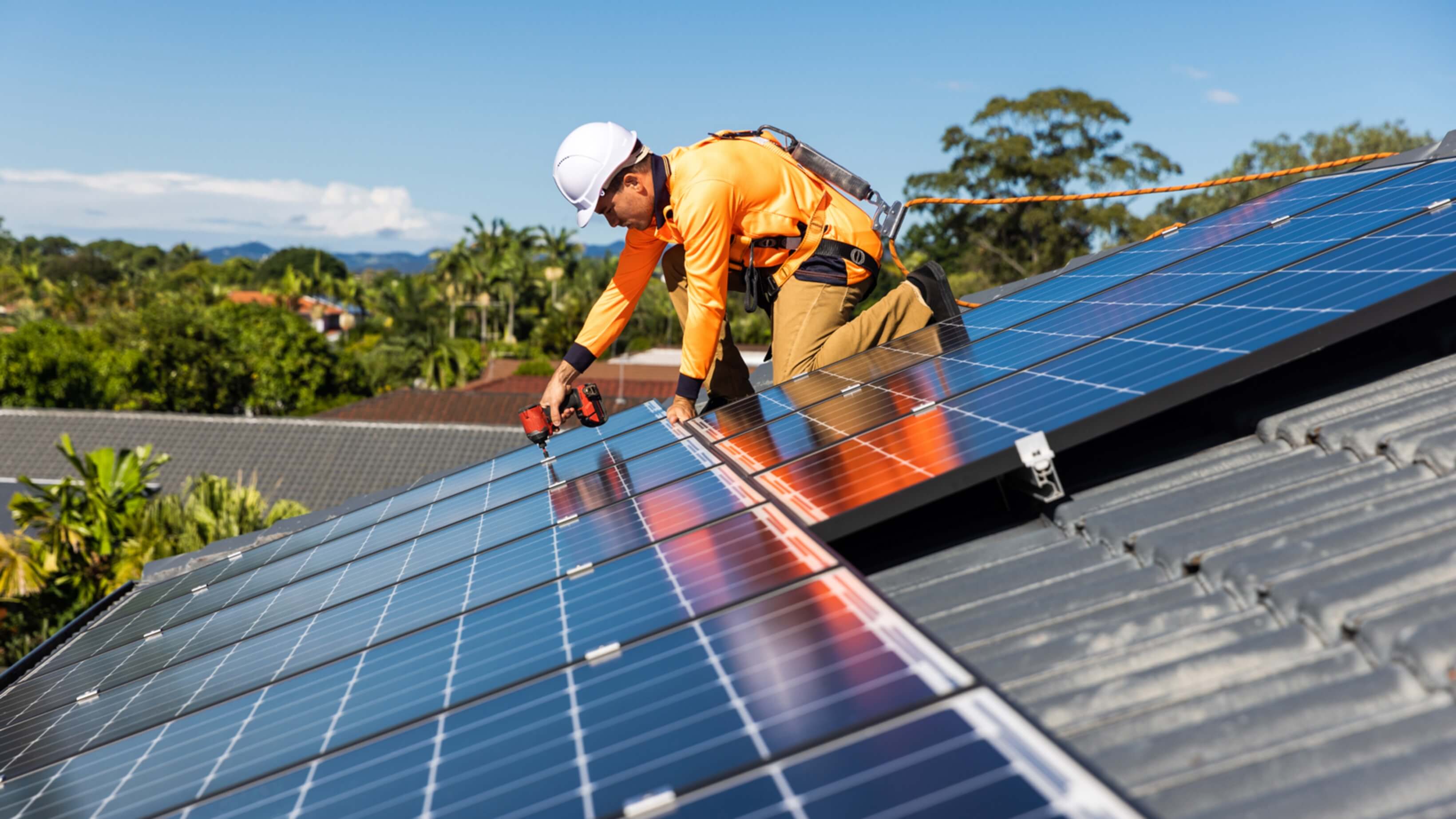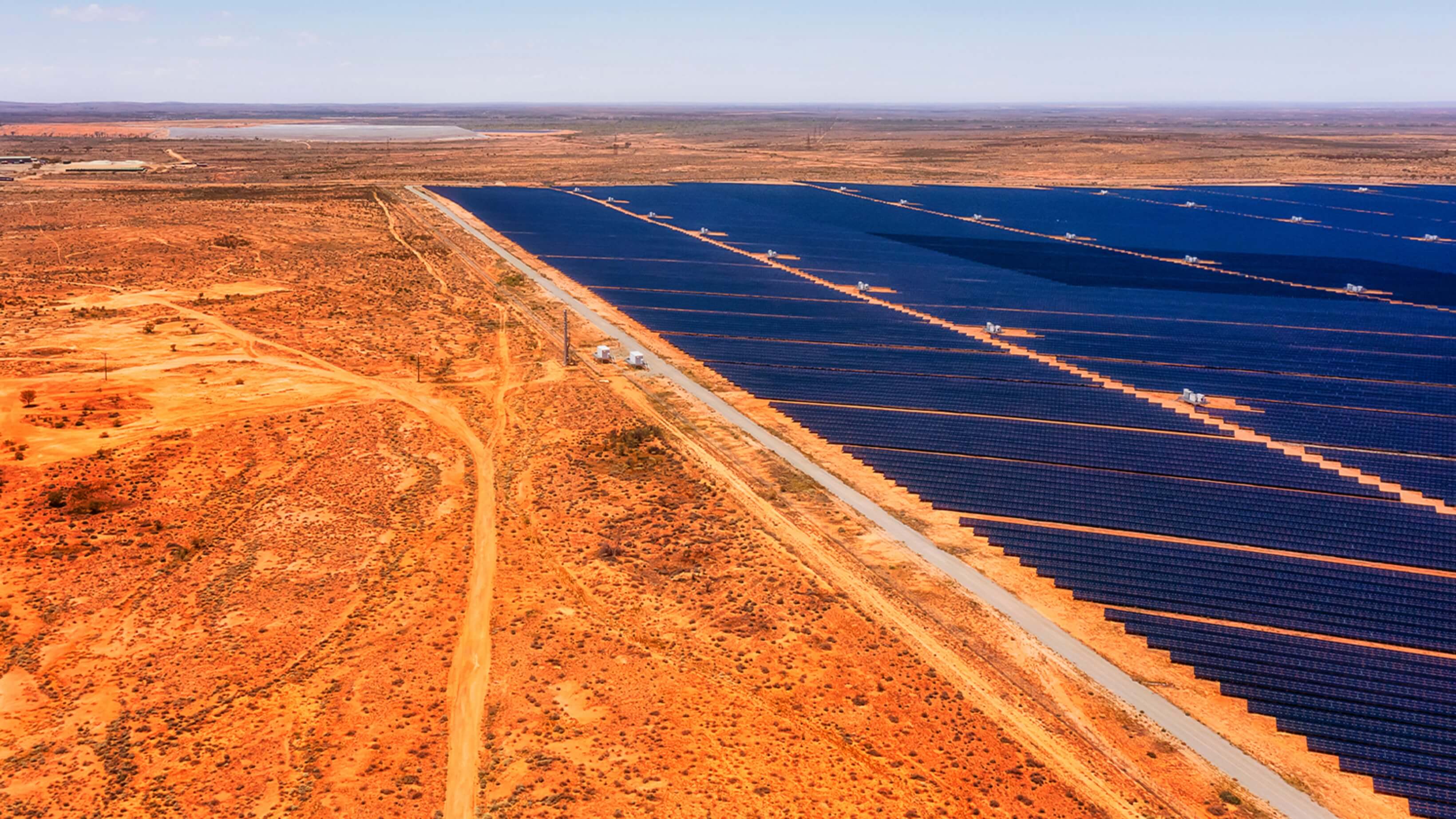W ith companies more concerned about climate change than ever before and the government committing to increased use of renewable energy sources, the Australian energy space is undergoing what’s been called “momentous legal change”.
W ith companies more concerned about climate change than ever before and the government committing to increased use of renewable energy sources, the Australian energy space is undergoing what’s been called “momentous legal change”.
In 2022, the Albanese government outlined new goals to cut Australia’s greenhouse gas emissions by 43 per cent below 2005 levels by 2030 and source 82 per cent of the country’s energy supply from renewable sources.
According to Deloitte’s 2022 CxO Sustainability Report, the climate agenda has evolved from being Australia’s “most divisive issue” to 75 per cent of surveyed C-suite executives and board members confirming that their companies are “very concerned” about climate change, with the majority having been personally and professionally impacted. While most of those in corporate Australia are already integrating climate change into their corporate strategies, Deloitte partner and Asia-Pacific climate and sustainability leader Will Symons stated in the report that “to avoid dangerous climate change and capture the massive opportunities from the low-carbon transition, action needs to significantly accelerate”.
While these new developments, as previously revealed by Lawyers Weekly, resulted in a big 2022 for the energy market, there will also be a number of lasting impacts for the legal industry — and new challenges for firms and legal departments to overcome.

The energy sector is reportedly set to be one of the biggest areas of growth in 2023. Here, four energy lawyers discuss what’s in store for the legal profession as the space continues to boom within the Australian economy.
With renewable energy and environmental, social and governance (ESG) now being issues that sit firmly in boardrooms and C-suites, as well as new regulations passing Parliament in September last year — 2023 is set to be a massive year for the energy industry. The transition to clean energy meant that 2022 was an “exciting period for the energy sector”, highlighted Corrs Chambers Westgarth head of energy and natural resources Tracey Greenaway.
“Ambitious policies and accelerating renewable implementation in China, the US, Europe and Australia have inspired confidence in industry leaders to continue to lead in this growth in global wind, solar and battery capacity into 2023,” she said.
“Our team has really enjoyed working collaboratively with our clients in this rapidly changing sector — we expect the opportunities to continue in 2023.”
This team includes Corrs partner Anthony Arrow, who confirmed that commitments at both state and federal government levels, as well as ESG policy commitments, are also having a huge effect on the Australian legal market.
“As a result of this significant shift and growth in the energy sector, coupled with the inability [of] the National Electricity Market (NEM) to safely and securely accommodate the planned and necessary development of renewable generation assets, the legal profession is experiencing high volumes of work in this area. That work is of increasing complexity and sophistication involving both domestic and international clients,” he explained.
“The work demands that lawyers have a strong grasp on their clients’ commercial needs and the regulatory framework within which they are operating. We have also seen a need to ensure that different practice groups within the firm are collaborating to support clients’ activities on a multi-disciplinary basis, often including a combination of property, planning, environmental, construction, corporate, tax and banking.
“Not only are lawyers advising traditional renewable energy clients, most businesses have a new focus on their carbon footprint and are looking to explore ways in which they can achieve net zero outcomes through transactions ranging from corporate power purchase agreements (PPAs) to investments in clean or renewable energy projects, including carbon capture and storage. The legal profession is assisting these clients through this transition in areas where they may well never have transacted previously.”

And especially as energy as a practice area only grows, the sector will have a “busy, possibly rocky, but very interesting 2023”, King & Wood Mallesons partner and energy sector lead Vishal Ahuja revealed.
“The energy sector is definitely one of the growth areas in the legal profession. The transition from a fossil fuel-based system to a predominantly renewables system is massive, with estimates of over $300 billion needed to achieve this,” he said.
“We need not only new generation and storage on the supply side but also innovative solutions on the demand side with the impact of solar PV, electric vehicles and home automation. It is driving all types of legal work, a lot of which is dealing with new issues, new regulation and new technology.”
This growth is likely to continue in the legal profession for at least the “short to medium term”, G2 Legal Australia director Daniel Stirling predicted.
“The reason for this is the growth of the renewable energy sector and increased ESG requirements for organisations, while the oil and gas and traditional energy industry still requires significant legal assistance both within law firms and in-house within the sector,” he said.
This is something nrol director Jesse Shah echoed.
“The energy sector, I feel, is growing, especially with the demand for renewable energy sources and growth of the oil and gas sectors. I also see the expansion of infrastructure projects driving the growth,” he said.
“The Australian government has also introduced new regulations and policies related to renewable energy, which leads to a greater demand for legal services, and as a result, firms are now investing further in this sector.”
As the war for talent continues into 2023 — with some firms even offering loyalty bonuses — candidates are increasingly looking to firms to not only offer flexible working and better culture but also value alignment and work in newer, exciting areas. Moreover, legal candidates are looking for areas of opportunity — something which, with an increased focus on renewables and sustainability in recent years, the energy sector is rife with.
“The demand for energy lawyers has increased over the years with this focus on renewables and a shift to sustainable energy sources. Also, the mining industry has seen a few ups and downs, thus affecting the amount lawyers in this space,” Mr Shah confirmed.
“With regards to environment teams, I also have seen real growth in this area, as increased regulatory requirements around environmental protection. Many firms see environmental law as a real growth area, especially with the growing emphasis on sustainability and a move to low-carbon economies.
“I see recruitment in both areas only growing; more firms are either expanding their teams or starting to build [or] create teams in this area. 2023 can only see this growth continue.”
Similarly, Mr Stirling said that with the Australian government continuing to push towards the new net zero targets, the energy sector will grow, as will recruitment within the space.
“With the new Australian government and [its] global counterparts pushing towards net zero targets, the renewable energy sector will continue to grow to increase production. In addition, increased regulation to support these aggressive targets will require expert guidance from internal and external lawyers.
This has resulted in law firms creating specific ESG advisory divisions having previously just handled this area within other teams,” he explained. “This growth can also have a knock-on effect for related areas such as infrastructure, given the size and scale of some of the projects in this area. Needless to say, this growth will result in recruitment across these in-demand areas.”
Several BigLaw firms have already bolstered their energy and environment practices — and Mr Ahuja said that this is no exception at KWM. “Our energy team is growing quickly. Lawyers are seeing it as an exciting area with scope to be involved in assisting an industry to fundamentally change and help the world address climate change,” he said.
“A lot of it is so new — we tell our new lawyers don’t expect precedents.”


Last November, a report from Herbert Smith Freehills, Unlocking ESG Investment in Australia, surveyed over 100 business leaders across a variety of sectors and subsequently found that 90 per cent of business leaders think ESG outcomes are important when investing. A good case has been made for leading with an ESG strategy being good for business, as well as the importance for legal teams to go beyond compliance issues and offer their clients a variety of lessons on the ESG front. This, as previously reported by Lawyers Weekly, also requires a culture of pervasive awareness in terms of ESG risks.
For KWM, key growth areas have been within renewable energy, decarbonisation and advising on ESG requirements, which Mr Ahuja said was only likely to continue.
“We have seen growth within the ESG area in particular; in some cases, lawyers with some overlap in this space [are] moving to specialise in the area given the demand. At present, the more traditional energy areas such as oil and gas and mining are more stable though longer term it will be interesting to see whether the demand in this area remains as countries continue the energy transition towards renewable sources,” he said.
“We expect to see this continue to grow given the focus on sustainability within governments, the general public and large energy sector companies. In addition, many large global investment companies are looking to invest in renewable projects to meet their own ESG requirements as well as customer demand. This will likely see many firms look to grow their teams to position themselves for this increasing workload.”

Additionally, while the federal election result has meant that Australia’s energy transition will have more momentum moving forward, more bankable wind and solar projects, as well as green hydrogen, will aid in reducing organisations’ carbon footprint, Thomson Geer renewable energy and banking specialist Jae Lemin told Lawyers Weekly in October last year.
ESG trends are also shaping the legal landscape — both in terms of legal departments continually integrating ESG into their day-to-day and also as a result of growing client demand for “cross-disciplinary solutions that reflect the intersectionality of ESG risks”, outlined Corrs head of responsible business and ESG Phoebe Wynn-Pope.
“As investment in renewable energy continues to rapidly accelerate, lawyers are helping clients navigate a complex web of ‘E’, ‘S’ and ‘G’ considerations that arise in the energy transition. For example, when advising clients on M&A in the renewables market, lawyers are doing ESG due diligence alongside traditional legal due diligence.
“This will often mean looking at issues including supply chain sustainability and disclosure, considering the impact of geopolitical instability, reliance on high-risk sectors or commodities and assessing whether a business has in place adequate policies and processes the business has in place to identify and manage human rights risks, such as compliance with modern slavery reporting obligations and mandatory human rights due diligence requirements which are being developed and implemented in the EU, US and elsewhere,” she said.

“As another example, at the project development stage, lawyers are engaging with a broad range of ESG issues — from conducting business with respect for Indigenous rights when they develop or operate on the land or sea country of Indigenous peoples, to understanding emerging reporting requirements on biodiversity loss and nature-related risks while awaiting the publication of the Taskforce for Nature-related Financial Disclosures (TNFD) in 2023.”
There are also a number of ESG trends within the profession, according to Mr Ahuja, who said that these would be especially relevant coming up to 2025 net zero and emissions targets.
“Corporates are definitely focused on ESG issues, and many have upcoming 2025 targets that need to be achieved. The regulatory focus on greenwashing and capital chasing green investments means that there will be more rigorous corporate strategies to achieve climate objectives and better-articulated targets,” he explained.
“We think that corporates will expand their investment horizons and look at new ways to achieve goals, including direct investment in abatement and offsets with a flight to quality. Companies will look beyond scope 1 and 2 emissions (although the new safeguard mechanism will impact large emitters) and also focus on scope 3 emissions. We can also expect more carbon-neutral products and climate litigation.”

PERCENT
Of business leaders think ESG outcomes were important when investing

With renewable energy and ESG now being issues that sit firmly in boardrooms and C-suites — and climate-conscious lawyering growing in popularity — significant increases in investment in Australia’s green energy transition are to be expected, both in 2023 and beyond.
“Australia’s new energy targets seek to increase confidence in the renewable energy market and incentivise billions of dollars of investment. This is also supported by the federal government’s new Capacity Investment Scheme, a Commonwealth revenue underwriting mechanism seeking to unlock $10 billion of public and private sector investment in renewables. Increased investment, climate change, and a growing need for reliable energy supply [have] resulted in more renewable energy and storage projects in the pipeline than ever,” Mr Arrow explained.
“In particular, we have seen growing activity in offshore wind projects, a shift to powering fossil fuel extraction companies with renewables, and heightened interest in green hydrogen. There is also a significant amount of investment in the development of battery storage projects. With growing international demand for green hydrogen, we expect to see accelerated momentum in this Australian industry, which may improve hydrogen pricing and benchmarking uncertainty.
“Demand for lithium will also increase with the growing supply of renewable energy and need for battery storage. We have already identified an increase in small-cap lithium miners joining the ASX. The recent increased interest and investment in the Australian renewables market has already begun to improve the reliability and security of the national energy market and should drive down Australian energy prices inflated by global tensions in the long-term.”
2023 will also see a large investment in new renewable, storage and transmission projects as governments in NSW, Victoria, and Queensland implement their policies to facilitate the replacement of coal-fired power stations, as well as more hybrid projects, integrated technologies and an increase in carbon trading domestically and internationally, Mr Ahuja outlined.
Particularly as the Energy Security Board’s 2025 redesign program ramps up, there will also be a “continued redesign of retail and wholesale markets to fit the new grid” and “further regulatory pressure on energy companies as large electricity and gas price increases flow to customers”, as well as a greater regulatory focus on greenwashing.

Law firms should be prepared to answer questions from their clients about sustainability and ESG issues, argued one DLA Piper partner.
Last year, the Australian Competition and Consumer Commission (ACCC) announced a crackdown on greenwashing. It said it would work with the Australian Securities and Investments Commission (ASIC) and the Clean Energy Regulator to stop companies from misleading consumers with “green” claims.
The spotlight being on greenwashing in recent years has also come with increased corporate accountability within the ESG space, as well as a number of challenges for lawyers advising clients in the energy and ESG sphere.
“An underlying theme of [these] trends is the tension between the level of government intervention in energy markets and the need to provide certainty for private capital to invest,” Mr Ahuja added.
For Corrs, battery storage and technology has been a key trend, as well as increased natural resources activity.
“We have seen an increasing shift towards battery storage being key to the green energy transition objective going forward. In 2023 and beyond, both short- and long-duration battery storage technology will continue to be critical. This will help to increase the reliability and resilience of increasingly decentralised power supply. The battery technology is vital to grid stability. We are confident that battery storage will be an increasingly crucial part of the energy mix,” Ms Greenaway added.
“Focus on access to lithium and other rare earths has also led to increased M&A activity in the natural resources sector. We expect this trend to continue in the next year.”
And moving forward, Mr Arrow added that lawyers, in particular, need to “keep abreast” of changes within the energy sector — for both their firm’s and their clients’ sake.
“Given the new space in which we are all operating, it is more critical than ever for lawyers to keep abreast of the quickly changing regulatory environment, invest in truly understanding the commercial drivers, and be collaborative with one and other, and also with other industry professionals as we all work together as part of the solution to a transition to clean energy globally and for generations to come,” he said.

